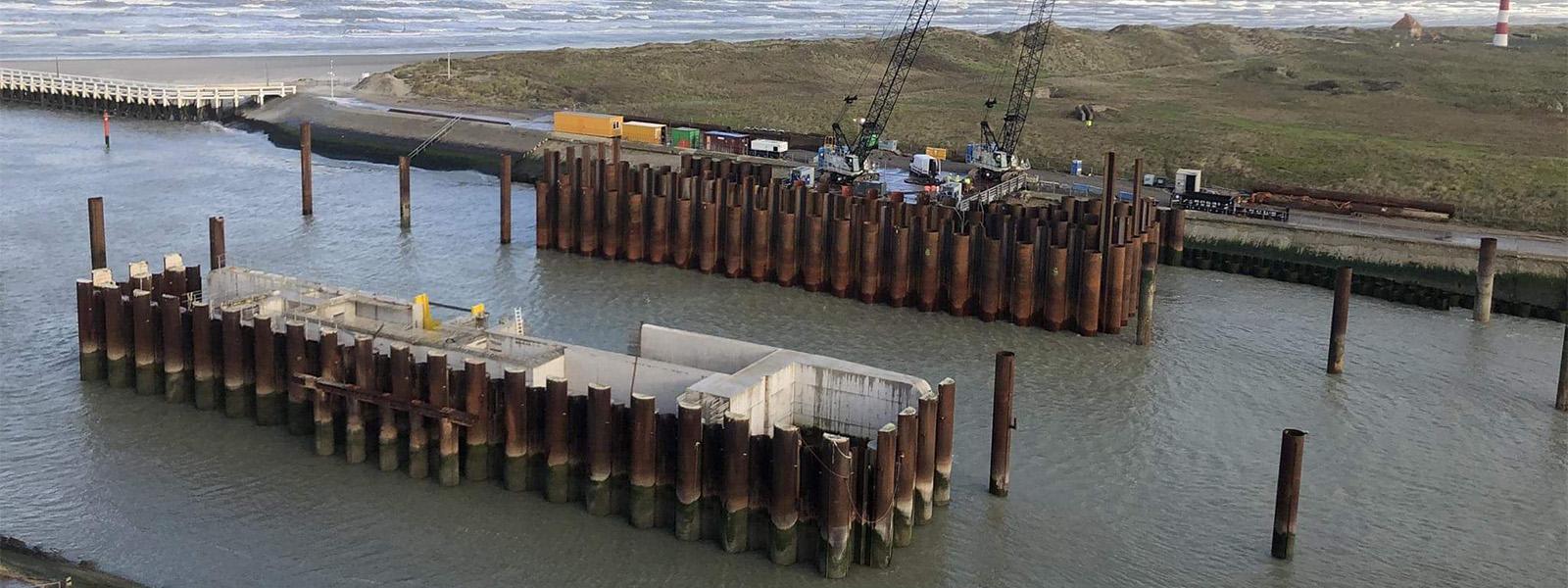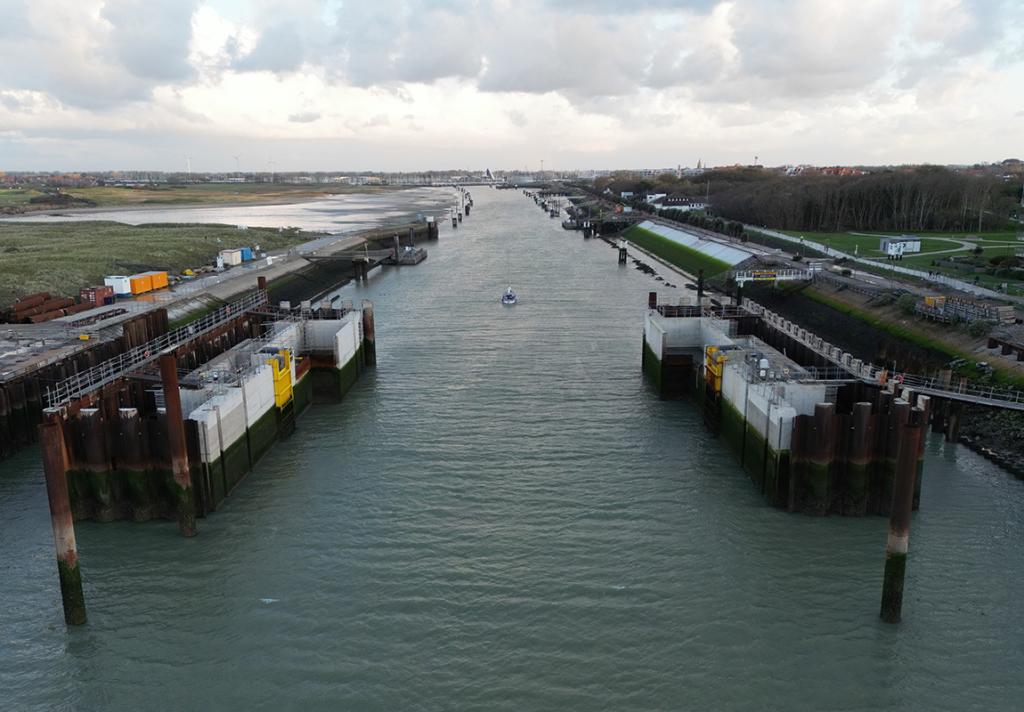Storm surge barrier | Belgium
The Storm Flood Barrier at the Mouth of the River Yser
Storm surges are one of the main natural threats in the North Sea region. Today, coastal ports are most at risk of flooding in case of heavy stormy weather. To protect the coast and hinterland from heavy storms, the Flemish Government approved the Masterplan for Coastal Safety in 2011. This plan includes the building of a storm flood barrier at the mouth of the river Yser in Nieuwpoort. After in-depth studies, a horizontal sector gate with a clearance width of 38 metres was chosen.
Download
 English
English








